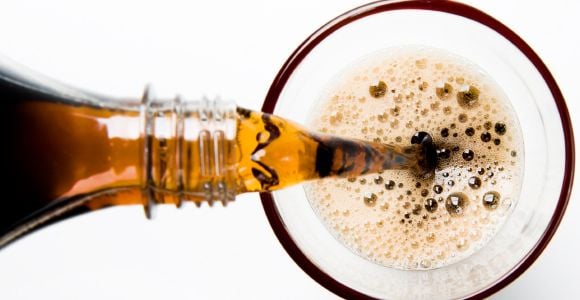This is basically a "which is the lesser of the two evils" type of question. Without spending too much time on something we all know, let me just state that sugar is not healthy. If you drink a standard can of soda you get about ten teaspoons of the white stuff. That is a lot. And that is just a twelve ounce serving. Most sodas now come in much larger sized bottles so you can only imagine the enormous number of empty calories involved with consuming these beverages.
What about diet sodas? They contain no calories so that must be a good thing, right? Not necessarily. Artificially sweetened drinks contain one or more of the following chemically derived ingredients: aspartame, sucralose, acesulfame-K, or saccharine.
Our FDA has approved the safety of these additives, however, according to Marion Nestle (author of What To Eat), "testing is invariably done by the makers of the products, rather than by the government or independent testing agencies, and their studies leave much room for interpretation."
I still remember my first diet soda. I had just arrived at college and my mother took me grocery shopping for some dorm room snacks. As I reached for a six pack of my favorite soda, Mountain Dew, my mom suggested I try the diet version. My first sip was disgusting. But as she had assured me, it was something I got used to and before long diet soda was all I would drink. Looking back now, I cringe when I think of all those chemicals I put in my body and I can only hope that I did not do any damage.
Drinking diet soda is a personal decision and the occasional drink should not cause any negative effects for most people, but the possibility does exist. Many people do not mind the risk while others will make the effort to consume products that contain more wholesome, natural ingredients. I tend to think along the lines of, if man made it then it has the potential for harm. Remember how brilliant we thought trans-fats were when they were first invented? The refining of wheat was believed to be progressive and now look at all of the health issues created by that innovation. And what about the pesticides and preservatives that were added to foods that later turned out to be carcinogenic?
If your food philosophy is to avoid artificial ingredients and keep your body more in tune with nature, then you most likely will choose alternative beverages to sugar-filled and artificially sweetened drinks. If you crave the caffeine that some sodas provide, try switching to tea (either iced or hot). Yerba mate is another naturally caffeinated drink to help boost energy. If carbonation is what you desire, try a no-calorie naturally flavored sparkling water. Just be sure to check the ingredient list for added sugar or artificial sweeteners.
Breaking the sweet drink routine, whether sugar or artificial, is just like any other habit - it takes time, patience, and dedication, but you can do it. If you stick with it you will find that you no longer miss the drinks that you thought you needed. Your taste buds will readjust from craving sweet tasting liquids to appreciating the thirst quenching properties of water.
Corinne Goff is a Registered Dietitian who is absolutely passionate about food, health, and nutrition. Corinne has a BA in Psychology from Salve Regina University and a BS in Nutrition from the University of Rhode Island. As a nutritionist, her objective is to help people reach their health goals by offering a personalized holistic approach to wellness that incorporates natural foods and lifestyle changes. She works together with her clients to develop daily improvements that they feel comfortable with and that are realistic. She believes that the focus on wholesome, nutrient-rich, real food, is the greatest possible way to become healthier, have more energy, decrease chances of chronic disease, and feel your best. For more information, please visit her website at RI Nutrition Housecalls.com.



